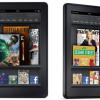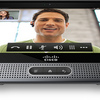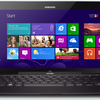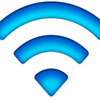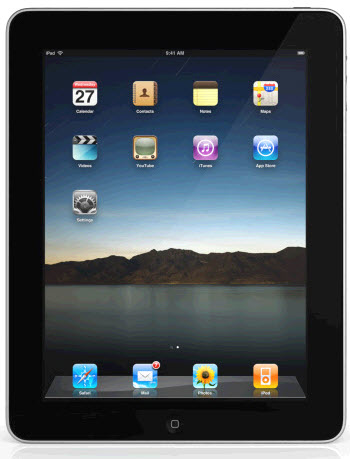 The original 2010 iPad diagonal screen size was 9.7" (9.5" width). Three years later, the fourth generation iPad is still 9.7". Amazon was able to carve out a new successful tablet size niche with the Kindle Fire, which has a 7.1" diagonal screen size. Apple was forced to respond with the Apple mini which sports a 7.9" diagonal. The Kindle Fire along with its siblings, the Kindle, Kindle Paperwhite were successful because they were cheaper, easier to hold and read in bed, laying on a beach, etc. They are the perfect-sized e-Reader, while the original iPad and subsequent generations are too big and bulky as a comfortable e-Reader.
The original 2010 iPad diagonal screen size was 9.7" (9.5" width). Three years later, the fourth generation iPad is still 9.7". Amazon was able to carve out a new successful tablet size niche with the Kindle Fire, which has a 7.1" diagonal screen size. Apple was forced to respond with the Apple mini which sports a 7.9" diagonal. The Kindle Fire along with its siblings, the Kindle, Kindle Paperwhite were successful because they were cheaper, easier to hold and read in bed, laying on a beach, etc. They are the perfect-sized e-Reader, while the original iPad and subsequent generations are too big and bulky as a comfortable e-Reader.
But we're neglecting two other players in the tablet space - Google (Android) and Microsoft (Windows 8). Google's Android has a few tablets in various sizes, including the Samsung Galaxy Note 10.1 (10.1") and the Google Nexus 10 (10.055"), but none of which carve out a new tablet niche. Google's rumored Google Chromebook Pixel device is an interesting device sporting 4 million pixels with 2560 x 1700 resolution and a touch-screen. However, it's a laptop/notebook with a permanent keyboard, not a tablet. If the Chromebook Pixel has a removable keyboard I'd consider it a tablet/notebook hybrid, similar to the Surface Pro or my Samsung 700T Windows 8 tablet/notebook hybrid.
Speaking of Windows 8, the past few days there has been a ton of coverage on Microsoft's Surface Pro, much of it negative. Here's a sampling:
Walt Mossberg, All Things D: "I like the original Surface and see it as a tablet with the extra benefit of some Microsoft Office programs. However, I am less enamored with the Surface Pro. It’s too hefty and costly and power-hungry to best the leading tablet, Apple’s full-size iPad. It is also too difficult to use in your lap. It’s something of a tweener — a compromised tablet and a compromised laptop."
Joanna Stern, ABC News: "The Surface Pro is a good choice for a niche mobile user, one who is willing to pay $1,000 for the power and robustness of a full Windows computer in a small and very compelling form factor. Many people, however, will likely prefer to get a tablet and buy a separate Windows laptop, so they don't have to make another compromise." 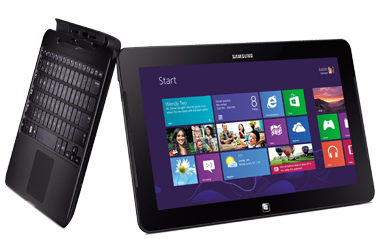 Note the word "compromise" in both of these Surface Pro reviewers. Ironically, I started my Samsung 700T Windows 8 review with these words - "After using and testing the Samsung ATIV Smart PC Pro 700t (XE700T1C) for a few weeks I've come to the conclusion that Windows 8 tablets will without a doubt beat Apple iPad tablets and Android tablets. The reason is simple actually and can be summed up in just two words - "No compromise"."
Note the word "compromise" in both of these Surface Pro reviewers. Ironically, I started my Samsung 700T Windows 8 review with these words - "After using and testing the Samsung ATIV Smart PC Pro 700t (XE700T1C) for a few weeks I've come to the conclusion that Windows 8 tablets will without a doubt beat Apple iPad tablets and Android tablets. The reason is simple actually and can be summed up in just two words - "No compromise"."
Battery life? Stop being an Apple fanboy. It ain't all about battery life.
Apparently, I disagree with these two respected reviewers. So what's the difference between the Microsoft Surface Pro tablet and the Samsung 700T I reviewed that causes me to believe Windows 8 tablets can combine your tablet and notebook/laptop to be your all-in-one device? Most of the reviews point to the 3-5 hour battery life in the Surface Pro even though the somewhat comparable 11" MacBook Air gets 4 hours of battery life. Many reviewers seem to make the mistake of comparing Windows 8 tablets with the iPad's 10+ hour battery life. Yes, the iPad makes no compromise when it comes to battery life, but it sure as heck makes other compromises, like say: no Flash, no full Office Suite, no 3rd party software except through locked-down App Store.
Don't get me wrong, I love my iPad, but to set the iPad's battery life as the benchmark for all tablets is ignoring the various tablet niches that have yet to all be discovered. Apple hit the 9.7" tablet niche out of the park and Amazon hit the 7" tablet niche out of the park, so who's to say there isn't a tablet niche for full Windows with a lower battery lifespan? Features are just as important if not more important than battery life. That said, Apple is killing it with 1 in 6 PCs being iPads and 1/3rd of all tablets.
I've been using my Samsung 700T Slate 11.6" tablet with optional keyboard dock for a few months now and I've stopped using my iPad for quick surfing or checking email. I get about 5 hours of battery life with the 700T, which I find is plenty. If I do get low on power, I can connect the ~10 foot thin power cord to the tablet and it doesn't interfere with it's use at all. The iPad's ultra-short dock/charging cable is useless, unless you are very close to a power outlet and even then it's location on the bottom makes it a bit cumbersome to charge and use, especially in landscape mode where your hand touches the dock cable.
No, battery life is not a valid excuse to knock the Surface Pro (or the Samsung 700T). But after using the Samsung 700T Windows 8 tablet for a few months I have discovered one "compromise" that merits discussion and that is screen-size. Yes, the 700T sports a 11.6" screen which is 1" bigger than the Surface Pro's 10.6" screen and 2" bigger than the iPad, but it's still not big enough.
Metro/Modern UI is Not Enough...
Here's why - Even with Microsoft's touch-friendly Metro/Modern UI, there are occasions when you have to use the Desktop or Desktop app, such as Windows Explorer or Microsoft Outlook. I've found that running 1920x1080 (HD) resolution on my 700T tablet looks phenomenal, but certain apps such as Outlook 2013 or Windows Explorer are a bit hard on the eyes due to small fonts. There are workarounds, such as changing font-sizes or changing the zoom level, but that affects the user experience. Further, using the tip of my pointer finger to click on very small menus, dialog boxes, scroll box, etc. is a tricky proposition - sometimes requiring me to break out my trusty S-pen stylus. Using my Slate as a tablet in Metro mode is fine, but when using Windows Explorer or Outlook 2013 in desktop mode, I'm practically squinting with the small text running at 1920x1080 resolution. So I need... I want a bigger tablet screen.
The Next Tablet Niche...
I know if the screen was just 1-2 inches bigger I wouldn't have to mess with zoom levels or font sizes. By increasing the screen size, everything gets scaled larger making it easier to drag-and-drop, click on menus, move the scroll box, etc. I know 14-15" laptops are the most popular., but that may be too big & bulky for a tablet hybrid, but I could definitely see a 13-14" tablet hybrid being more eye-friendly. Microsoft and their partners need to develop a large 13-14" tablet with some sort of keyboard dock to make it a tablet/notebook hybrid. I truly believe there is a new larger screen-size tablet niche waiting to be explored and I will be one of the first customers.



